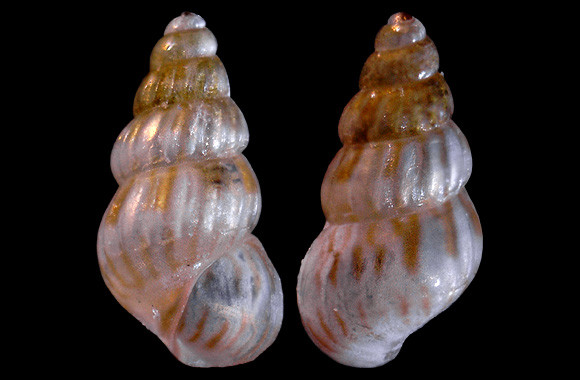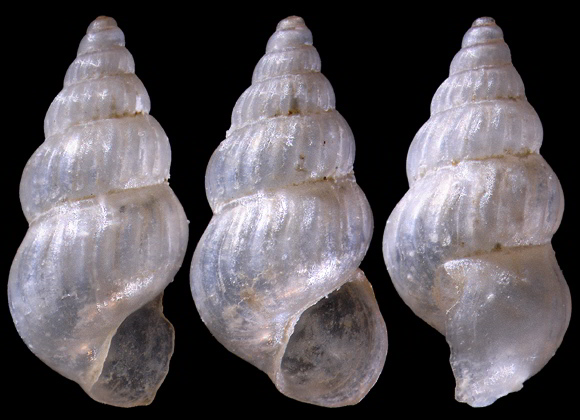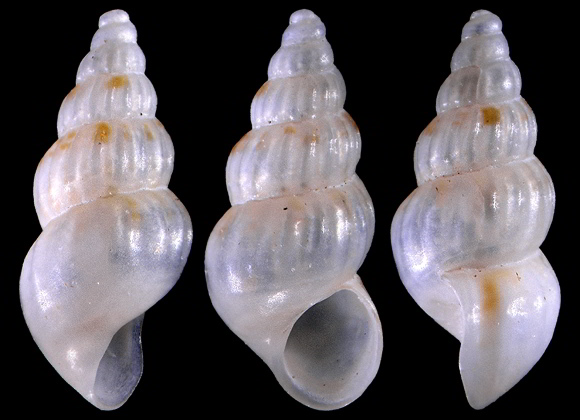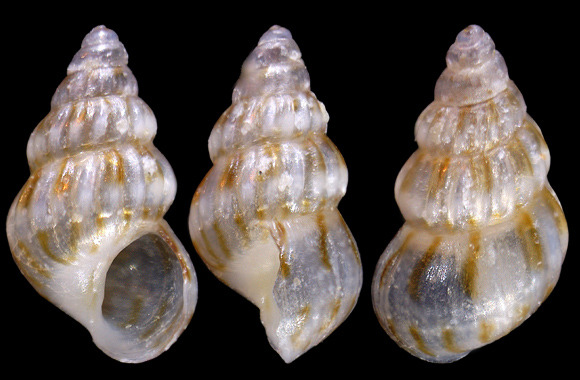
Grazer and detritus feeder in the infralittoral-circalittoral.
Original taxon: Rissoa philippi, which is a declension error, as the binomen of the « Rissoaria di Philippi » should have been written Rissoa philippii, in order to respect the writing of a masculine genitive. This has never been corrected since.
Cap Ras, Llançà, Girona, Catalunya, NE. Spain. 1,8mm.
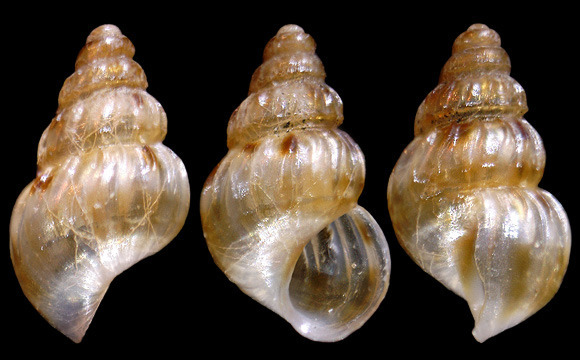
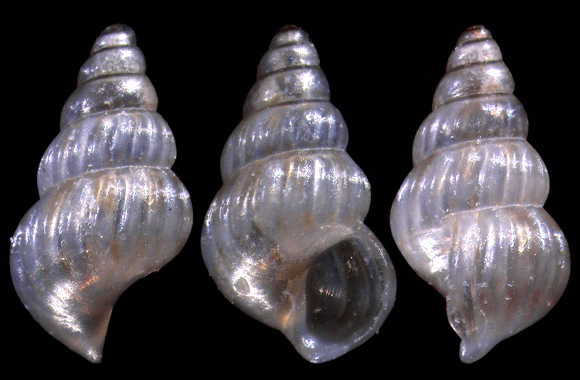
Port-Vendres, Eastern Pyrenees, S. France. 1,8mm.
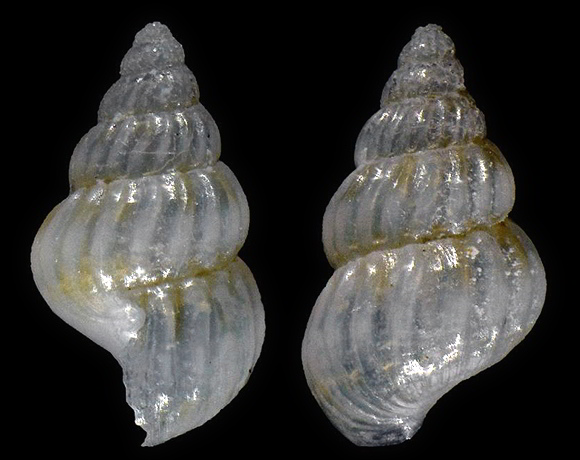
Original pictures provided by S. Clanzig (FR).
– (CC BY-NC-SA) –
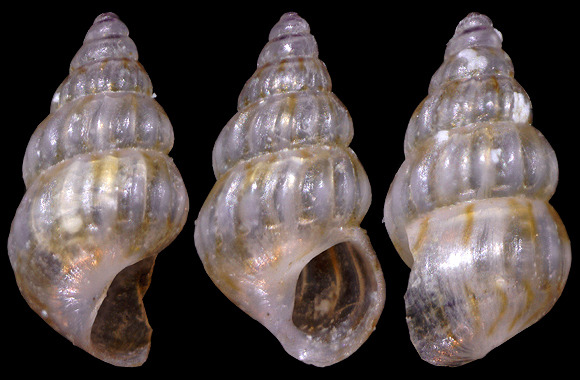
« Shell thin, transparent, glabrous and glossy. Spire high, composed of well convex whorls, provided with rounded longitudinal costae. On the last whorl, these costae are abruptly interrupted on the periphery. Deep suture. Aperture oval. Columella arched. Labrum simple, rounded. Colour of a uniform hyaline white, sometimes decorated with reddish longitudinal flammules. » – Bucquoy, Dautzenberg & Dollfus: Les mollusques marins du Roussillon vol. I, Paris 1882-1886, p.276: Rissoa dolium. – 8m deep, at base of submarine bank of conglomerate, 600m east of Mochlos, NE. of Kolpos Mirabellou, Lasithi, N. Crete. 1,8mm.
